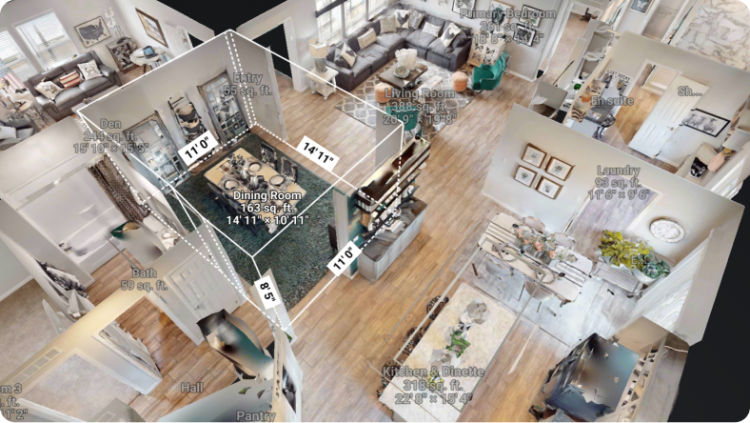The power of 3D scanning in architecture and design
3D scanning technology is revolutionising Malta’s architecture, construction, and real estate industries by providing highly accurate digital models of physical spaces, improving project accuracy, collaboration, and efficiency

The architecture and construction industries are being transformed by the integration of 3D scanning technology, offering new ways to visualise and document physical spaces with unmatched accuracy and detail. From design to construction and renovation, 3D scanning provides a comprehensive digital representation of environments, revolutionising the way professionals approach their work.
What is 3D scanning?
At the heart of this technology is the ability to create detailed, high-resolution 3D models of physical spaces, known as 'point clouds'. Using a combination of 360-degree camera to capture the image and laser-measured distance points, 3D scanning delivers a precise digital representation of any environment, accurate down to the millimetre.
This digital model can be further enhanced with interactive tags, allowing teams to highlight key features, communicate about specific design elements, or flag potential construction challenges. For larger projects with outdoor components, aerial imaging through drone technology can be incorporated, providing a complete view of the site from above and offering valuable data for condition reports.

Key benefits
One of the most significant advantages of 3D scanning is its ability to offer continuous access to a virtual representation of the project. This allows team members, clients, and stakeholders to access the model from any device, at any time, to perform virtual walkthroughs, track project progress, and take precise measurements without the need for repeated site visits.
Accuracy and efficiency
Accuracy is essential in any construction or renovation project, and 3D scanning ensures that all information is up-to-date and precise. Relying on potentially outdated or incomplete existing documentation can lead to design and construction errors, which can have a domino effect on the entire project. With 3D scanning, you capture the present reality of the space, minimizing the risk of errors and improving the overall efficiency of the project.
.png)
Additionally, 3D scanning offers 'point-in-time' imaging. This allows projects to be scanned at various stages, generating digital condition reports that document progress. For instance, scanning a space before construction begins creates a baseline condition report that can be referenced throughout the project. A further scan, taken when mechanical, electrical, and plumbing (MEP) systems are installed but not yet concealed by walls, creates a crucial record of these installations. This documentation becomes invaluable for future renovations or repairs, as it provides a precise map of all MEP elements without requiring invasive demolition, saving both time and money.
Integration with design tools
3D scanning data can be easily integrated into the architectural workflow. One key feature is the ability to generate CAD (Computer-Aided Design) and BIM (Building Information Modelling) files directly from the point cloud. These files, complete with multiple layers—such as architecture, furniture, and exposed MEP systems—are essential for digitally assisted design, facilitating a more streamlined and accurate planning process.
For architectural teams, layout plans with room dimensions can also be created from the scan, reducing manual work and providing highly accurate floor plans that can be adjusted or refined as needed.
Applications in real estate
The benefits of 3D scanning extend beyond design and construction. Once a project is completed, 3D models and drone footage can be used to enhance real estate listings. Virtual tours, combined with 2D still images, allow potential buyers to explore properties from the comfort of their homes. These high-quality virtual tours present properties in a more engaging and dynamic way, increasing the likelihood of attracting interest.
The future of virtual staging
Another exciting development in the world of 3D scanning is virtual staging. As the technology evolves, the ability to add virtual furniture to a scanned property is becoming more refined. Virtual staging offers potential buyers the opportunity to visualize how a space could look when fully furnished, enhancing their understanding of its functionality and potential. This feature is particularly useful for real estate listings, where the buyer's first impression can significantly influence the decision-making process.
As 3D scanning continues to evolve, it’s clear that this technology has the potential to transform how architectural, construction, and real estate professionals operate. The ability to create highly accurate digital models, accessible at any time, allows for more efficient project management, better communication across teams, and enhanced documentation at every stage of the project lifecycle.
In Malta, TS Scanning is at the forefront of this technological shift, bringing state-of-the-art 3D scanning and drone imaging to a wide range of industries, from architecture to real estate. Their expertise is helping local professionals harness the full potential of this transformative tool, setting a new standard for precision, efficiency, and innovation in the built environment.




.png)



















